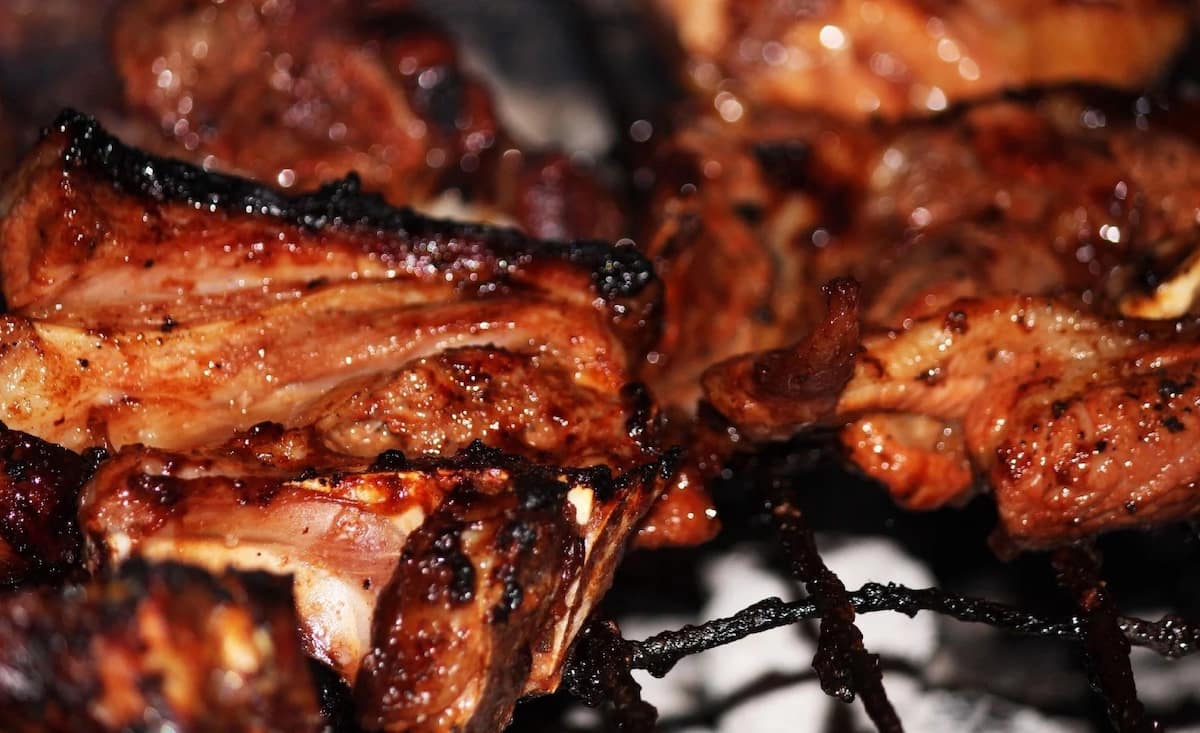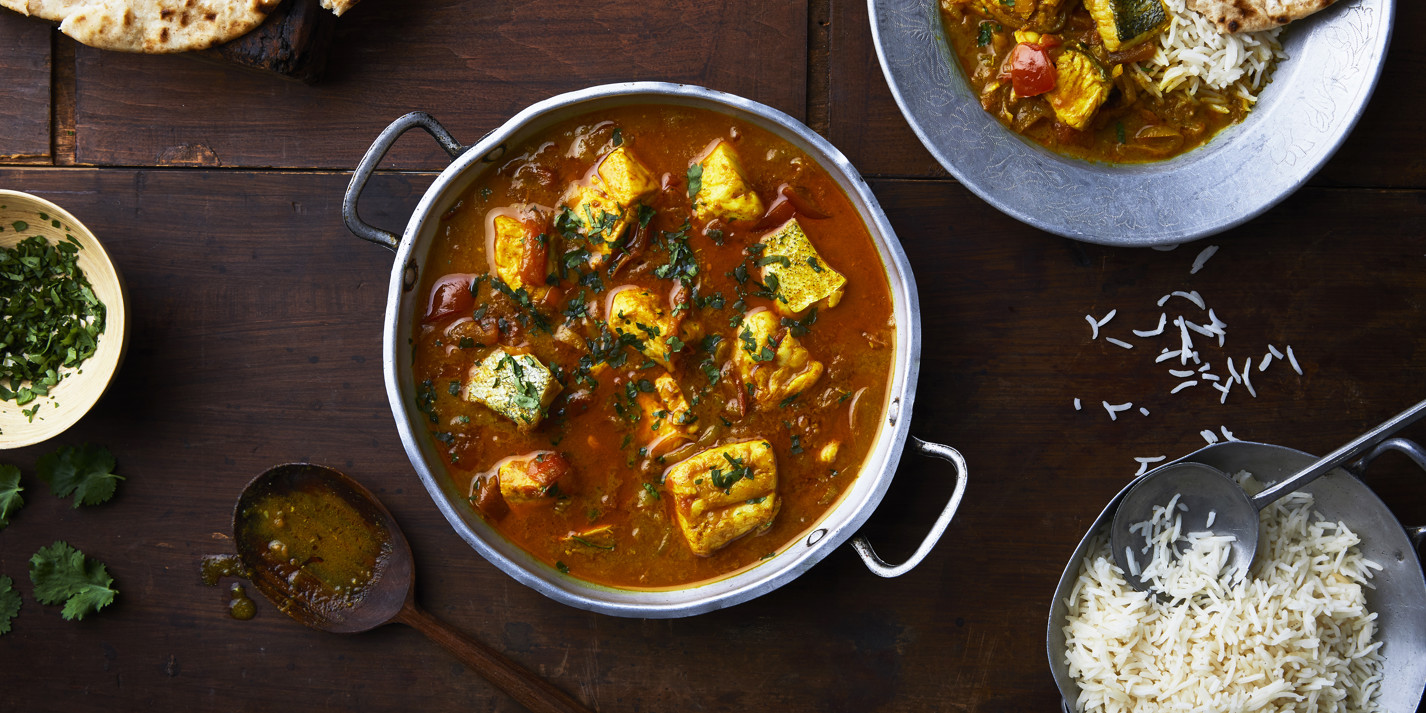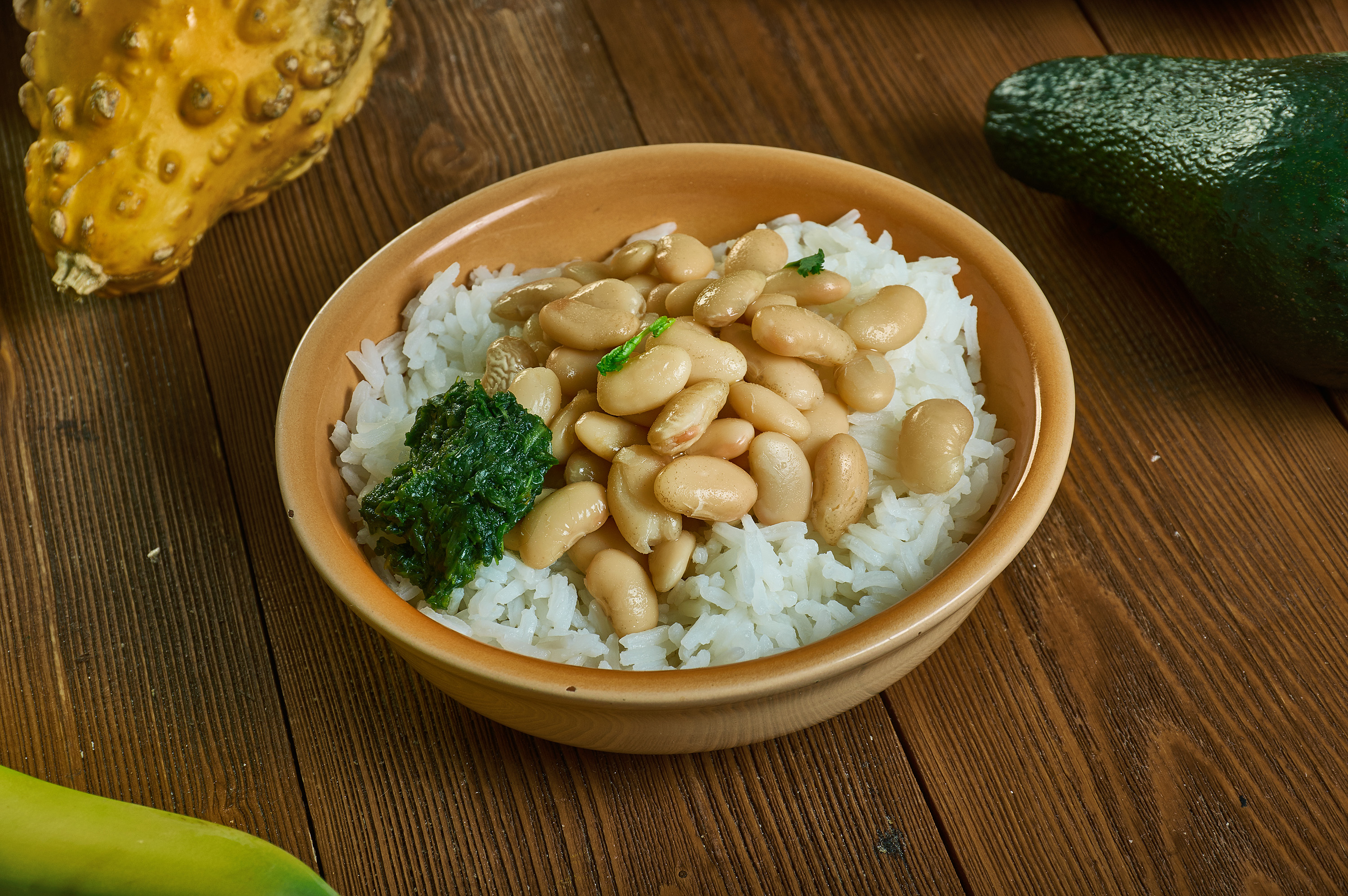Taste of Afrika: Top Ten Best and Famous Tanzanian Foods to Try in Tanzania

1. Ugali and Sukuma Wiki
Let's begin with the Tanzanian staple, Ugali. Made from maize flour and water, this stiff porridge-like dish is commonly served with Sukuma Wiki, a delectable collard greens dish.

Recommendation: Try it at Mama's Kitchen in Dar es Salaam for an authentic taste of Tanzanian cuisine. (Website: www.mamaskitchentz.com)
Ugali and Sukuma Wiki Recipe
Ingredients for Ugali:
- 2 cups of maize flour (also known as cornmeal)
- 4 cups of water
- Salt to taste
Ingredients for Sukuma Wiki:
- 1 bunch of sukuma wiki (collard greens) or kale, washed and finely chopped
- 1 medium-sized onion, finely chopped
- 2 tomatoes, chopped
- 2 tablespoons of vegetable oil
- Salt to taste
- Optional: 1-2 green chilies, finely chopped (for a spicy kick)
Procedure:
-
Prepare Sukuma Wiki:
- Heat the vegetable oil in a large pan or skillet over medium heat.
- Add the chopped onions and sauté until they become translucent.
- Add the chopped tomatoes and cook until they soften and release their juices.
- Add the sukuma wiki (or kale) to the pan and stir well.
- Cover the pan and let the greens cook for about 10-15 minutes, or until they are tender.
- Season with salt to taste. If desired, you can also add chopped green chilies for extra heat. Stir well and remove from heat.
-
Prepare Ugali:
- In a separate pot, bring the water to a boil.
- Gradually add the maize flour while stirring continuously with a wooden spoon or whisk to avoid lumps.
- Keep stirring until the mixture thickens and starts to pull away from the sides of the pot.
- Reduce the heat to low and cover the pot. Allow the ugali to cook for about 10 minutes, stirring occasionally to prevent sticking.
- After 10 minutes, remove the lid and stir vigorously to combine any remaining lumps and achieve a smooth consistency.
- Cook for an additional 5 minutes until the ugali is firm and fully cooked.
- Remove from heat.
-
Serve:
- Traditionally, Ugali is served in a large communal bowl or platter.
- Scoop a portion of Ugali onto individual plates or bowls.
- Serve the Sukuma Wiki alongside the Ugali.
- Ugali is often eaten by tearing off a small piece with your fingers, shaping it into a small ball, and using it to scoop up the Sukuma Wiki.
- Enjoy your Ugali and Sukuma Wiki!
2. Zanzibari Pilau
Indulge in the rich flavors of Zanzibari Pilau, a fragrant rice dish cooked with a blend of spices, including cardamom, cinnamon, and cloves.

Recommendation: Experience this culinary masterpiece at The Silk Route Restaurant in Stone Town, Zanzibar. (Address: Gizenga Street, Stone Town, Zanzibar)
Zanzibari Pilau Recipe
Ingredients:
- 2 cups basmati rice
- 1 kg boneless chicken or beef, cut into pieces (optional)
- 3 onions, finely chopped
- 3 tomatoes, finely chopped
- 4 cloves of garlic, minced
- 2 tablespoons vegetable oil
- 2 tablespoons ghee or butter
- 2 teaspoons cumin seeds
- 2 teaspoons coriander seeds
- 2 teaspoons fennel seeds
- 2 teaspoons turmeric powder
- 2 teaspoons curry powder
- 1 cinnamon stick
- 4 cardamom pods, lightly crushed
- 4 cloves
- Salt to taste
- 4 cups water
- Fresh coriander leaves for garnishing (optional)
- Lemon wedges for serving
Procedure:
- Rinse the basmati rice in cold water until the water runs clear. Soak the rice in water for about 30 minutes, then drain and set aside.
- In a large pot or Dutch oven, heat the vegetable oil and ghee/butter over medium heat. Add the cumin seeds, coriander seeds, and fennel seeds. Sauté for a minute until fragrant.
- Add the chopped onions and cook until they turn golden brown.
- If using chicken or beef, add the meat to the pot and cook until it's browned on all sides. If you prefer a vegetarian version, skip this step.
- Add the minced garlic, chopped tomatoes, turmeric powder, curry powder, cinnamon stick, cardamom pods, cloves, and salt. Mix well and cook for a few minutes until the tomatoes are softened.
- Add the soaked and drained rice to the pot and stir to combine it with the spices and meat/vegetables.
- Pour in the water and bring the mixture to a boil. Reduce the heat to low, cover the pot, and simmer for about 15-20 minutes or until the rice is cooked and the liquid has been absorbed. Avoid stirring the rice while it cooks to prevent it from becoming sticky.
- Once the rice is cooked, remove the pot from the heat and let it sit covered for about 5 minutes to allow the flavors to meld.
- Fluff the rice gently with a fork, remove the whole spices if desired, and transfer the pilau to a serving dish.
- Garnish with fresh coriander leaves, if using, and serve hot with lemon wedges on the side.
Notes:
- Zanzibari Pilau is traditionally made with either chicken or beef, but you can make a vegetarian version by omitting the meat and adding more vegetables like carrots, peas, and potatoes.
- Adjust the spices according to your taste preferences. You can add more or less of the spices mentioned in the recipe.
- The pilau is typically served with a side of coconut chutney or raita.
- Zanzibari Pilau is known for its vibrant yellow color, thanks to the turmeric and curry powder.
3. Nyama Choma
No visit to Tanzania is complete without tasting Nyama Choma, succulent grilled meat, often marinated with a mixture of spices.

Recommendation: Head to The Waterfront Sunset Restaurant in Dar es Salaam for a fantastic Nyama Choma feast. (Website: www.waterfronttz.com)
Zanzibar Nyama Choma Recipe
Ingredients:
- 2 pounds of beef or goat meat (preferably ribs or shoulder)
- 2 tablespoons vegetable oil
- 2 tablespoons lemon juice
- 2 tablespoons Worcestershire sauce
- 2 teaspoons paprika
- 1 teaspoon ground cumin
- 1 teaspoon ground coriander
- 1 teaspoon garlic powder
- 1 teaspoon onion powder
- 1 teaspoon salt
- 1/2 teaspoon black pepper
- Freshly chopped cilantro (for garnish)
- Lemon wedges (for serving)
Procedure:
-
Preparing the marinade:
- In a bowl, combine the vegetable oil, lemon juice, Worcestershire sauce, paprika, ground cumin, ground coriander, garlic powder, onion powder, salt, and black pepper. Mix well to form a marinade.
-
Marinating the meat:
- Place the meat in a large ziplock bag or a shallow dish. Pour the marinade over the meat, ensuring it is evenly coated. Massage the marinade into the meat to ensure it is well coated.
- Seal the bag or cover the dish with plastic wrap and refrigerate for at least 2 hours, or preferably overnight. This allows the flavors to penetrate the meat.
-
Preparing the grill:
- Preheat your grill to medium-high heat. Make sure the grill grates are clean and oiled to prevent sticking.
-
Grilling the meat:
- Remove the meat from the marinade and let any excess marinade drip off. Discard the remaining marinade.
- Place the meat on the grill and cook for about 8-10 minutes on each side, or until it reaches your desired level of doneness. For medium-rare, the internal temperature should be around 145°F (63°C). Adjust the cooking time according to your preference and the thickness of the meat.
-
Resting and serving:
- Once the meat is cooked to your liking, remove it from the grill and let it rest for a few minutes. This allows the juices to redistribute and the meat to become tender.
- Slice the meat into individual portions, and garnish with freshly chopped cilantro.
- Serve the Zanzibar Nyama Choma hot, accompanied by lemon wedges on the side for an extra tangy flavor.
4. Chapati and Mishkaki
Treat your taste buds to the flavorsome combination of Chapati, a soft unleavened bread, and Mishkaki, grilled skewered meat.

Recommendation: Visit Addis in Dar Restaurant in Dar es Salaam for an authentic experience. (Address: 1397 Haile Selassie Road, Masaki, Dar es Salaam)
Tanzanian Chapati and Mishkaki Recipe
Chapati Ingredients:
- 2 cups all-purpose flour
- 1 teaspoon salt
- 1 tablespoon vegetable oil
- 1 cup warm water (approximately)
Chapati Procedure:
- In a mixing bowl, combine the flour and salt. Make a well in the center and pour in the vegetable oil.
- Gradually add warm water to the flour mixture while stirring with a spoon or your hands. Keep adding water until you form a soft and slightly sticky dough.
- Transfer the dough to a clean, floured surface and knead for about 5 minutes until it becomes smooth and elastic.
- Divide the dough into small portions (about the size of a golf ball) and roll each portion into a thin, round disc.
- Heat a skillet or frying pan over medium heat and place a rolled-out chapati on the hot surface. Cook for about 1 minute until bubbles start to form.
- Flip the chapati and cook the other side for another minute. Press lightly with a spatula to help it cook evenly and puff up.
- Remove the chapati from the pan and repeat the process with the remaining dough portions.
- Serve the chapati warm with Mishkaki or your desired accompaniment.
Mishkaki Ingredients:
- 1 kg boneless meat (beef, chicken, or lamb), cut into bite-sized cubes
- 1 onion, finely chopped
- 3 cloves garlic, minced
- 1 tablespoon ginger paste
- 2 tablespoons vegetable oil
- 2 tablespoons tomato paste
- 1 tablespoon soy sauce
- 1 tablespoon Worcestershire sauce
- 1 tablespoon lemon juice
- 1 teaspoon paprika
- 1 teaspoon cayenne pepper (adjust according to your spice preference)
- 1 teaspoon ground cumin
- Salt to taste
- Skewers for grilling
Mishkaki Procedure:
- In a bowl, combine the onion, garlic, ginger paste, vegetable oil, tomato paste, soy sauce, Worcestershire sauce, lemon juice, paprika, cayenne pepper, ground cumin, and salt. Mix well to make the marinade.
- Add the meat cubes to the marinade and ensure they are well coated. Let the meat marinate for at least 1 hour, or preferably overnight in the refrigerator for enhanced flavor.
- Preheat a grill or barbecue to medium-high heat.
- Thread the marinated meat cubes onto skewers, leaving a little space between each piece.
- Place the skewers on the grill and cook for about 10-15 minutes, turning occasionally, until the meat is cooked through and slightly charred.
- Once cooked, remove the Mishkaki from the grill and serve hot with Chapati or your preferred side dishes.
5. Mchuzi wa Samaki
Seafood lovers, rejoice! Mchuzi wa Samaki is a delightful Tanzanian fish curry made with a blend of spices, coconut milk, and fresh fish.

Recommendation: Experience this culinary delight at The Rock Restaurant in Zanzibar. (Address: Michamvi Pingwe Peninsula, Zanzibar)
Tanzanian Mchuzi wa Samaki Recipe
Ingredients:
- 500 grams of fish fillets (such as tilapia or red snapper)
- 1 onion, finely chopped
- 2 cloves of garlic, minced
- 1-inch piece of ginger, grated
- 2 tomatoes, chopped
- 2 tablespoons of tomato paste
- 1 teaspoon of ground coriander
- 1 teaspoon of ground cumin
- 1 teaspoon of turmeric powder
- 1 teaspoon of paprika
- 1 teaspoon of curry powder
- 1/2 teaspoon of chili powder (adjust according to your spice preference)
- 1 cup of coconut milk
- 2 tablespoons of vegetable oil
- Salt to taste
- Fresh cilantro or parsley, chopped (for garnish)
Procedure:
- Clean the fish fillets, removing any scales and bones. Cut them into bite-sized pieces and set aside.
- Heat the vegetable oil in a large pan or pot over medium heat.
- Add the chopped onion and sauté until translucent.
- Add the minced garlic and grated ginger to the pan and cook for an additional minute, stirring frequently.
- Add the chopped tomatoes and tomato paste to the pan, and cook until the tomatoes break down and release their juices.
- In a small bowl, mix together the ground coriander, ground cumin, turmeric powder, paprika, curry powder, and chili powder. Add this spice mixture to the pan and stir well to coat the onion and tomato mixture.
- Pour in the coconut milk and stir to combine all the ingredients. Allow the mixture to simmer for about 5 minutes, stirring occasionally.
- Add the fish pieces to the pan, making sure they are submerged in the sauce. If needed, you can add a little water to ensure the fish is covered.
- Season with salt to taste. Be cautious with the salt if your tomato paste is already salty.
- Cover the pan and simmer gently for about 15-20 minutes, or until the fish is cooked through and tender.
- Once the fish is cooked, remove from heat and garnish with freshly chopped cilantro or parsley.
- Serve the Mchuzi wa Samaki hot with rice, chapati, or ugali (a traditional maize meal) for a complete meal.
6. Mtori
Savor the rich flavors of Mtori, a traditional Tanzanian dish made with mashed bananas and beef stew.

Warning: This dish contains beef. Not suitable for vegetarians or those with dietary restrictions.
Mtori Recipe
Ingredients:
- 500 grams of beef (preferably with bones)
- 3-4 green bananas (unripe)
- 1 large onion, finely chopped
- 2 cloves of garlic, minced
- 2 tomatoes, chopped
- 2 tablespoons of tomato paste
- 2 tablespoons of vegetable oil
- 1 teaspoon of ground ginger
- 1 teaspoon of ground coriander
- 1 teaspoon of ground cumin
- 1 teaspoon of paprika
- Salt and pepper to taste
- Water
Procedure:
- In a large pot, heat the vegetable oil over medium heat. Add the chopped onion and minced garlic, and sauté until they become translucent and fragrant.
- Add the beef to the pot and brown it on all sides. This will add flavor to the dish. Stir occasionally to ensure even browning.
- Once the beef is browned, add the chopped tomatoes and tomato paste to the pot. Mix well to combine the ingredients.
- Add the ground ginger, ground coriander, ground cumin, paprika, salt, and pepper to the pot. Stir everything together, ensuring the beef is well coated with the spices.
- Pour enough water into the pot to cover the beef. Bring the mixture to a boil, then reduce the heat to low and let it simmer for about 1 to 1.5 hours or until the beef is tender. You can also use a pressure cooker to speed up the cooking process.
- While the beef is simmering, peel the green bananas and cut them into chunks. Set them aside.
- Once the beef is tender, add the green banana chunks to the pot. Make sure there is enough liquid to cover the bananas. If needed, add more water.
- Continue simmering the mixture for an additional 30 minutes or until the bananas are cooked and tender.
- Taste the broth and adjust the seasoning if necessary. You can add more salt, pepper, or spices according to your preference.
- Once the beef and bananas are cooked, remove the bones from the beef if necessary. Serve the Mtori hot, along with some of the flavorful broth.
Mtori is traditionally enjoyed with plain cooked rice or Ugali, a maize meal porridge. You can also serve it with chapati or crusty bread.
7. Vitumbua
Indulge in the sweet delight of Vitumbua, a popular Tanzanian snack made from rice flour, coconut milk, and cardamom.

Recommendation: Visit Forodhani Night Market in Stone Town, Zanzibar, to enjoy freshly made Vitumbua from local vendors.
Vitumbua Recipe
Ingredients:
- 2 cups rice flour
- 1/2 cup all-purpose flour
- 1/2 cup sugar
- 1 teaspoon active dry yeast
- 1/2 teaspoon ground cardamom
- 1/4 teaspoon salt
- 1 cup coconut milk
- 1/2 cup warm water
- Oil, for frying
Procedure:
- In a small bowl, dissolve the yeast in warm water and let it sit for about 5 minutes until it becomes frothy.
- In a large mixing bowl, combine the rice flour, all-purpose flour, sugar, ground cardamom, and salt.
- Pour the yeast mixture and coconut milk into the dry ingredients. Mix everything together until you have a smooth batter. If the batter is too thick, add a little more water to achieve a pancake-like consistency.
- Cover the bowl with a clean kitchen towel and let the batter rest in a warm place for about 1-2 hours. This will allow the batter to ferment and rise.
- After the resting period, give the batter a gentle stir to incorporate any air bubbles that may have formed.
- Heat a non-stick pan or a griddle over medium heat and lightly grease it with oil.
- Spoon about 2 tablespoons of the batter into the pan for each Vitumbua. You can make them small or slightly larger, depending on your preference.
- Cook the Vitumbua on one side until small bubbles appear on the surface, then carefully flip them over using a fork or a spoon. Cook the other side until golden brown.
- Remove the cooked Vitumbua from the pan and place them on a paper towel-lined plate to absorb any excess oil.
- Repeat the process with the remaining batter, adding more oil to the pan as needed.
- Serve the Vitumbua warm as a snack or dessert. They are traditionally enjoyed with tea or coffee.
Enjoy your homemade Vitumbua!
8. Wali na Maharage
Wali na Maharage is a flavorful combination of rice and beans, a beloved dish in Tanzania.

Recommendation: Enjoy this classic Tanzanian dish at The Swahili House in Stone Town, Zanzibar. (Address: Shangani Street, Stone Town, Zanzibar)
Tanzanian Wali na Maharage Recipe
Ingredients:
- 2 cups basmati rice
- 1 cup kidney beans (or any other beans of your choice), soaked overnight and cooked until tender
- 1 large onion, finely chopped
- 3 garlic cloves, minced
- 2 tablespoons vegetable oil
- 2 tomatoes, chopped
- 1 teaspoon curry powder
- 1 teaspoon paprika
- 1/2 teaspoon turmeric powder
- 1/2 teaspoon cumin powder
- 1/2 teaspoon black pepper
- Salt to taste
- 4 cups water
- Fresh cilantro or parsley, chopped (for garnish)
Procedure:
- Rinse the basmati rice under cold water until the water runs clear. Soak the rice in water for about 30 minutes, then drain.
- In a large pot, heat the vegetable oil over medium heat. Add the chopped onions and minced garlic. Sauté until the onions are translucent and fragrant.
- Add the chopped tomatoes to the pot and cook until they start to soften.
- Add the cooked beans to the pot along with the curry powder, paprika, turmeric powder, cumin powder, black pepper, and salt. Stir well to combine the spices with the beans and tomatoes. Cook for a few minutes to allow the flavors to meld together.
- Add the soaked and drained basmati rice to the pot and stir gently to mix it with the bean mixture.
- Pour in the water and bring the mixture to a boil. Once it starts boiling, reduce the heat to low, cover the pot, and let it simmer for about 20-25 minutes, or until the rice is cooked and the liquid has been absorbed. Avoid stirring the rice while it's cooking to prevent it from becoming mushy.
- Once the rice is cooked, remove the pot from the heat and let it sit, covered, for about 5 minutes. This will allow the steam to evenly distribute and make the rice fluffy.
- Fluff the rice gently with a fork. Garnish with chopped cilantro or parsley.
- Serve the Tanzanian Wali na Maharage hot as a main dish or as a side dish with grilled or roasted meats.
Enjoy your delicious Tanzanian Wali na Maharage!
9. Ndizi Nyama
Experience the perfect blend of sweet and savory in Ndizi Nyama, a dish comprising ripe plantains and meat stew.

Warning: This dish contains meat. Not suitable for vegetarians or those with dietary restrictions.
Tanzanian Ndizi Nyama Recipe
Ingredients:
- 2-3 ripe bananas
- 500 grams of beef or any meat of your choice, cubed
- 1 large onion, finely chopped
- 2 tomatoes, diced
- 2 cloves of garlic, minced
- 1 tablespoon of ginger, grated
- 1 teaspoon of curry powder
- 1 teaspoon of paprika
- 1 teaspoon of turmeric powder
- 1 teaspoon of cumin powder
- Salt and pepper to taste
- Vegetable oil for cooking
- Water
Procedure:
- Peel the bananas and cut them into thick slices. Set them aside.
- In a large pot or pan, heat some vegetable oil over medium heat. Add the chopped onions and sauté until they become translucent.
- Add the minced garlic and grated ginger to the pot and cook for another minute or until fragrant.
- Add the cubed meat to the pot and cook until it browns on all sides.
- Once the meat is browned, add the diced tomatoes and cook until they soften and release their juices.
- Add the curry powder, paprika, turmeric powder, cumin powder, salt, and pepper to the pot. Stir well to coat the meat and vegetables with the spices.
- Pour enough water into the pot to cover the meat. Bring the mixture to a boil, then reduce the heat to low and let it simmer for about 1 hour or until the meat becomes tender.
- After the meat has cooked for about an hour, add the sliced bananas to the pot. Gently stir to combine everything.
- Continue cooking the stew for another 10-15 minutes until the bananas are soft and the flavors have melded together.
- Taste and adjust the seasoning if needed. If the stew is too thick, you can add a little water to achieve your desired consistency.
- Once the stew is ready, remove it from the heat and let it rest for a few minutes before serving.
Ndizi Nyama is typically served with plain rice, ugali (a staple maize meal dish), or chapati (Indian flatbread). Enjoy this flavorful Tanzanian dish with your chosen accompaniment!
10. Kachumbari
Complete your Tanzanian culinary adventure with Kachumbari, a refreshing salad made with diced tomatoes, onions, and fresh herbs.

Recommendation: Visit Onsea House Restaurant in Arusha for a delightful serving of this tangy salad. (Address: Old Moshi Road, Plot 67, Arusha)
Note: The images used in this blog post are for illustrative purposes only. Please ensure to use proper image sources and provide appropriate attribution for the images.
Tanzanian Kachumbari Recipe
Ingredients:
- 4 ripe tomatoes, diced
- 1 medium red onion, finely chopped
- 1 cucumber, peeled and diced
- 1 green bell pepper, diced
- 1-2 green chili peppers, finely chopped (optional)
- Juice of 1-2 lemons
- 2 tablespoons fresh cilantro leaves, chopped
- Salt, to taste
- Black pepper, to taste
Procedure:
- In a large bowl, combine the diced tomatoes, chopped red onion, diced cucumber, diced green bell pepper, and finely chopped green chili peppers (if using). Mix them well together.
- Squeeze the juice of 1-2 lemons over the mixture. The amount of lemon juice can be adjusted according to your taste preferences. Lemon juice adds tanginess to the salad.
- Add the chopped cilantro leaves to the bowl. Cilantro adds a fresh and aromatic flavor to the salad.
- Season the Kachumbari with salt and black pepper, according to your taste. Start with a small amount and adjust as needed.
- Mix all the ingredients together until they are well combined and the flavors are evenly distributed. You can use a spoon or your hands to mix the ingredients thoroughly.
- Once mixed, let the Kachumbari sit for about 10-15 minutes to allow the flavors to meld together. This will enhance the taste of the salad.
- After the resting period, give the Kachumbari a final stir and taste it for seasoning. Adjust the salt, black pepper, or lemon juice if needed.
- Serve the Kachumbari as a side salad or accompaniment to grilled meats, rice dishes, or other African dishes. It can also be enjoyed on its own as a light and refreshing snack.
That's it! Your Tanzanian Kachumbari salad is ready to be enjoyed. Remember, you can always customize the recipe by adding or omitting ingredients according to your preference.


0 Comments